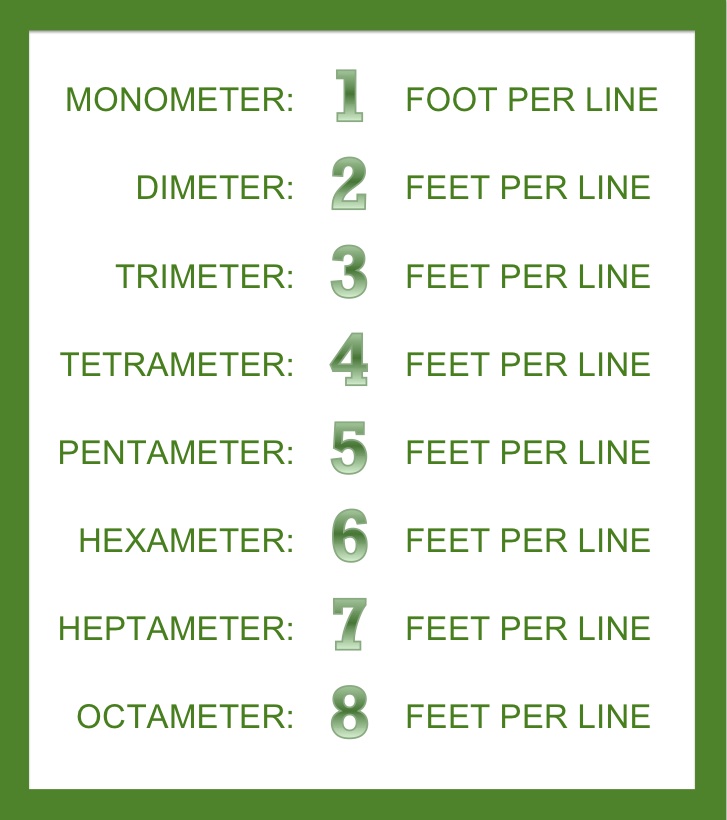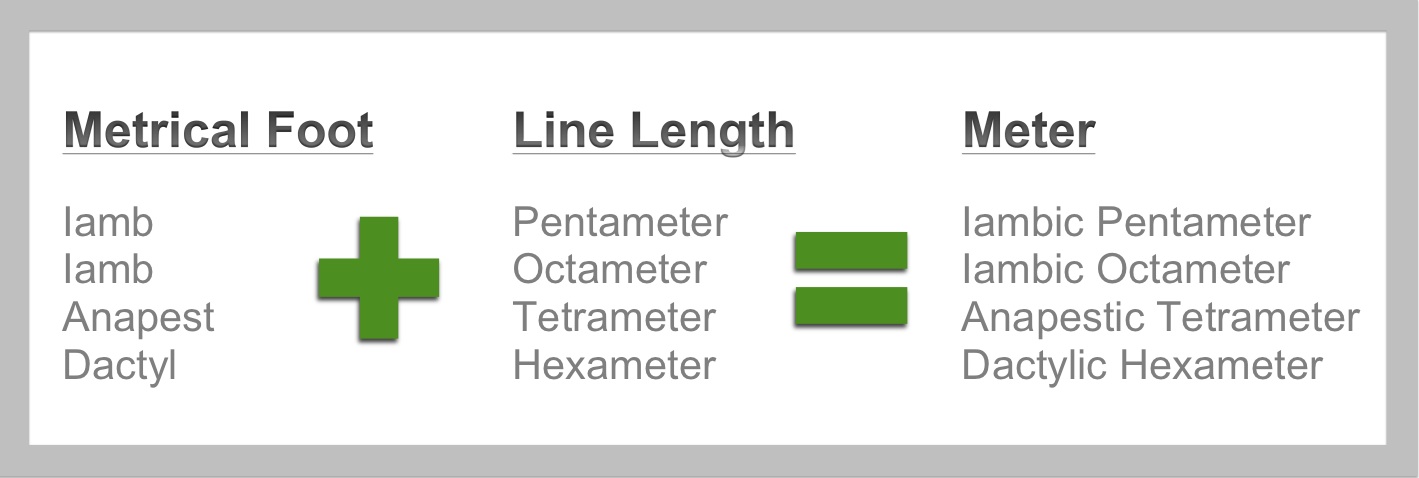104A. Calculating Meter and Metrical Lines
Metrical Lines
A Metrical Line is one individual line of a specific type of Metrical Foot, or one line with a specific combination of Metrical Feet, or one line of Meter.
The definitions in this section may seem a little circular (because they are), which might get confusing, but they are circular because Meter is really just a combination of individual components with similar names. When you understand how all the components fit together, you will see that Meter is a very well organized concept.
How Metrical Lines are named?
 A Metrical Line is named based on the number of feet that are in that line. The chart to the right shows the names of specific line lengths. Please note that, even though I have only listed one, some line lengths have more than one name, i.e. heptameter can also be called septameter. You could keep going long after eight, but you will rarely, if ever, see lines of verse with more than eight feet. The single most common line lengths you will see (and probably use) are Tetrameter and Pentameter.
A Metrical Line is named based on the number of feet that are in that line. The chart to the right shows the names of specific line lengths. Please note that, even though I have only listed one, some line lengths have more than one name, i.e. heptameter can also be called septameter. You could keep going long after eight, but you will rarely, if ever, see lines of verse with more than eight feet. The single most common line lengths you will see (and probably use) are Tetrameter and Pentameter.
![]() While you will rarely see Hexameter used today, both Homer and Virgil wrote their epics in Hexameter. So, if you ever plan on studying Greek or Latin, you will probably see a lot of poetry in Hexameter. Otherwise, um, not so much. (Homer wrote the Odyssey and the Iliad and Vergil wrote the Aeneid.). The most famous English poet, William Shakespeare, wrote in iambic pentameter.
While you will rarely see Hexameter used today, both Homer and Virgil wrote their epics in Hexameter. So, if you ever plan on studying Greek or Latin, you will probably see a lot of poetry in Hexameter. Otherwise, um, not so much. (Homer wrote the Odyssey and the Iliad and Vergil wrote the Aeneid.). The most famous English poet, William Shakespeare, wrote in iambic pentameter.
✅ Remember that in 103, we saw that Metrical Feet have names. This is important because when you combine one type of Metrical Foot with a specific line length, you get the name of a specific type of Meter. It’s that simple.
Metrical Foot + Line Length = Meter

Section 104B Important Meters describes specific types of Meter in more detail. It also demonstrates how Meter looks and sound when incorporated in (written) language.

